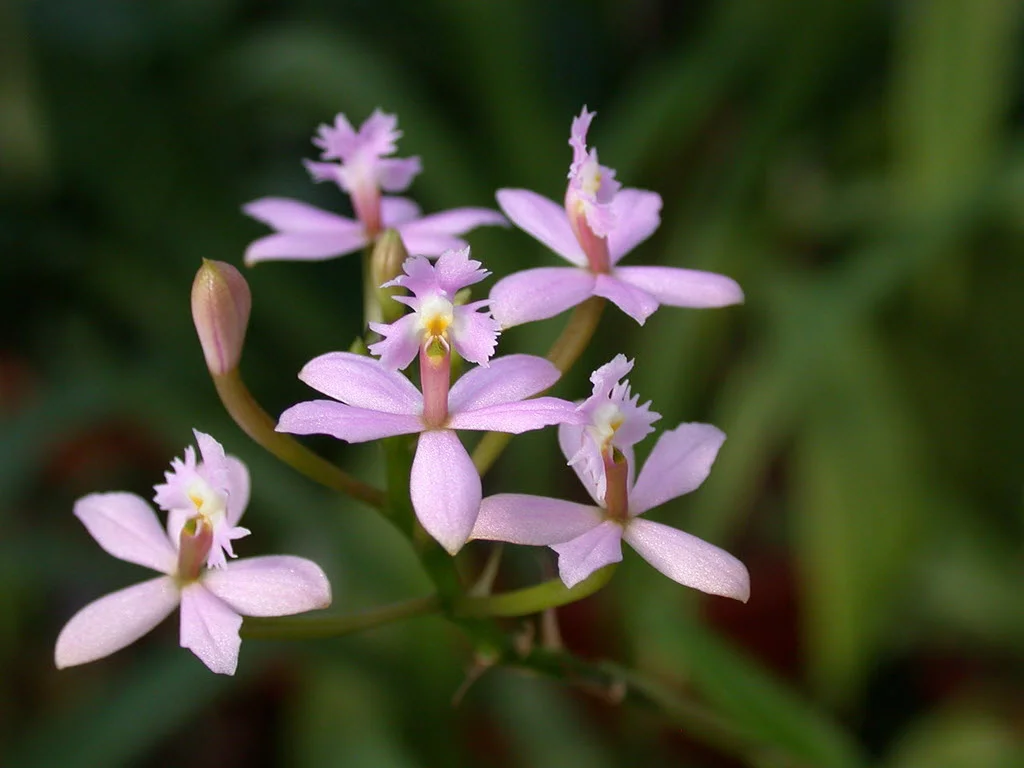Table of Contents
Pronunciation: Plu-roe-THALL-lis
Introduction
Pleurothallis orchids are one of the largest orchid genera in existence with over 1,000 species. The interesting thing about these orchids is that many of their flowers are so tiny that you need a magnifying glass to be able to fully appreciate how beautiful and complex they are.
Pleurothallis Strumosa
In the wild, in their native habitats, it's not uncommon to find up to seven different species growing on a single tree branch. They thrive in tropical environments but they can't tolerate very high temperatures.
Temperature
Even though this genus is native to the tropical Americas, they don't do well if the temperatures rise to over 70°F (21°C). If you allow them to be in environments where the temperatures get much hotter, they can shrivel up and die in a matter of a few hours.
Your temperatures will vary significantly depending on which species you're trying to grow, so it's important that you look up your species's requirements to ensure optimal growth. Temperatures can fluctuate from 50°F up to 70°F (10°C to 21°C).
Light
These orchids like low or intermediate light levels. They like to grow in at least partial shade, and if they're somewhere that gets direct light, you will want to place a shade structure over them like a netting.
If your plant is getting too much sun, it'll get a sunburn, and the leaves will turn brown or yellow and feel brittle. Your flowers will also shrivel up and die if they dry out and are exposed to direct sunlight.
Water and Humidity
These orchids contain no pseudobulbs, so they shouldn't be allowed to dry out as they'll die very quickly. If you are able to keep them in a very humid environment, you can water them as they're starting to dry out. This will most likely be once a day in the morning hours.
If your humidity levels are low, you'll want to water them more often, at least once a day with misting in the evening hours. Your humidity levels should be at minimum 70%, but they do very well in up to 100% humidity.
Feeding
It is best to feed your Pleurothallis orchids once every other week. Their fertilizer should be diluted to one-half or one-quarter strength before you give it to them, and it should be a well-balanced formula.
You also want to flush your plant thoroughly between fertilizer applications. This flushing will stop the salt content from building up, which is good because these orchids can't tolerate high salt levels.
Potting
Another thing that makes these orchids stand out is that they can grow continuously throughout the year with the right growing conditions. This allows you to be able to repot them at any point during the year except when temperatures rise past the recommended level of 70°F (21°C).
If you can maintain a humid and moist environment, you can mount these orchids on slabs of wood with a loose sphagnum moss mix to help them retain water. They also do very well potted in smaller pots or baskets.
You want your potting medium to support good airflow and rapid drainage. Ideally, you want to end up with a water-retentive mix that will drain most of the water away quickly. You can use fine fir-bark, tree fern, perlite, charcoal, or sphagnum moss mixed into your potting medium.
Videos
Sadly, we can't find a good care video for Pleurothallis Orchids. Once we start making our own videos, we'll put up the Pleurothallis as one of the first on our list. This species's blooms are tiny but they are the definition of exquisite. Watch this super short video of Pleurothallis schiedeito see how small they are.
Next up, Eric Imperiale from the San Fransisco Conservatory of Flowers shows us the size difference between the smallest and biggest examples of Pleurothallis. The variety of orchids there are in Nature is truly astounding.
It’s simply staggering when you consider the seemingly infinite and exquisitely gorgeous varieties of orchids. Be sure to check out our full list!
See More Beautiful Orchids











